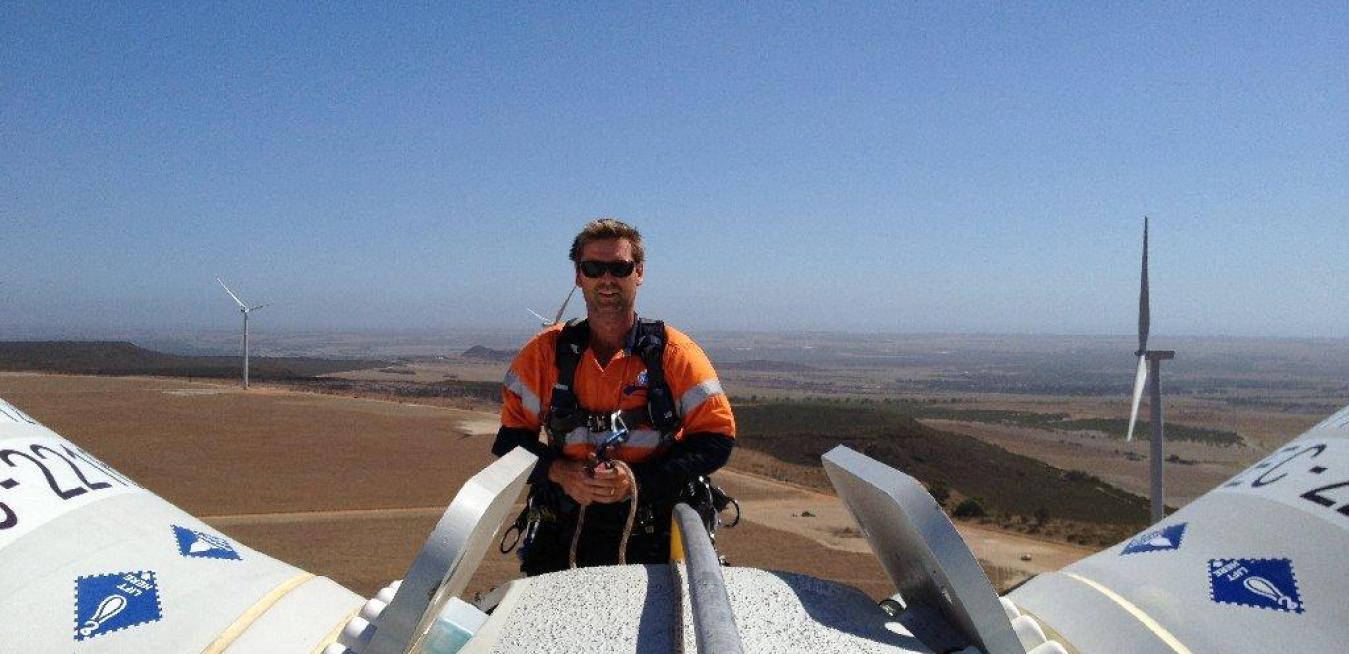As the site manager at Mumbida Wind farm in Western Australia he has responsibility for 22 wind turbines dotted across some 1,000 acres.
Each day, following an hour drive out to the site, he hosts an intense briefing session with staff to develop a clear understanding of the conditions.
While wind farm operators certainly welcome strong winds, Mumbida can sometimes record speeds of up to 50 knots. That can be dangerous enough in itself, and storm conditions that generate the biggest gusts can also deliver the turbines’ worst enemy: lightning.
These conditions typically occur between November and March, during which Mark and the team are on high alert.
So how does one get into the business of wind energy?
“I’m actually a diesel mechanic by trade, so I was kind of in the power generation industry already,” Mark said. “One summer I was with the family in our usual Christmas holiday spot in Albany, WA and we drove past a wind farm. It looked pretty cool and I wondered what you needed to do to get a job like that.”
Soon after he spied an ad in the Geraldton Guardian for wind technicians, applied, and got the job.
“That was 2005 and I’ve been in the industry ever since.”
Mark relishes the many challenges a young industry like wind farming presents, as well as the opportunities to find better ways of doing things. The job has also seen him travel to Germany, India and China.
So can anyone do it? Mark says flexibility is a crucial attribute for wind farmers.
“It’s important that you are an all-rounder and quite brave and fit because you have to climb into the turbines when you fix and service them.”
Despite the debate over wind, Mark still feels wind farming is the way forward.
“For Australia, it has to be one of the best forms of energy for the country’s future.”





